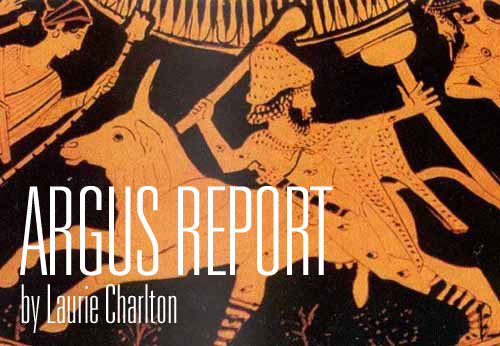Down the garden path: CCCs benefit developers, punish infillers
Council and the community are being led down the proverbial garden path by CAO Victor Kumar about the Development Cost Charge (DCC) Bylaw. Information provided to council by Mr. Kumar is misleading, inaccurate, incomplete, and frequently unsubstantiated. The only realistic data being provided seems to be coming from Ken Holmes. Thanks Ken!
Mr. Kumar states the current DCC bylaw “…has served its purpose and is no longer required based on the availability of other taxation tools available to council for the recovery of fees and charges arising from the impacts of “new” developments.” What complete nonsense! The DCC bylaw has not even begun to serve its purpose. Only a relatively small amount of money has been collected which can be used to help pay for projects worth millions of dollars that are only required because of new development, primarily at Red Mountain and at Redstone. None of the projects identified for DCCs have been started other than the upsizing of the sewer line along Columbia Ave. to accommodate increased flows from Red Mountain.
According to the Ministry of Community, Sport, and Cultural Development, DCCs are monies that municipalities collect from land developers to offset that portion of the costs related to the services that are incurred as a direct result of this new development. The demand created does not always relate to works that are located adjacent to the property being developed. Developers pay DCCs instead of existing taxpayers who are not creating the demand and are not benefitting from the new infrastructure. Using DCCs, local government can apply a common set of rules and charges to all development within a community. DCCs are applied as one-time charges against residential, commercial, industrial and institutional developments. They are usually collected from developers at the time of subdivision approval or at the time of issuing a building permit.
Mr. Kumar has stated that DCCs work well when there is high growth and that they were never designed for small communities like Rossland. Provincial government statistics show otherwise.
As of the beginning of 2012, 98 communities and 16 Regional Districts in BC have DCCs. Of the 98 communities with DCCs, 38 have populations less than 5000 – comparable in size to Rossland. Twenty-six of the 38 have populations smaller than Rossland’s. Of the 38 small municipalities with DCCs, 26 have DCC rates greater than the rates Rossland currently charges. DCC rates for these small municipalities range as high as $19,915 for a residential single family dwelling.
Some of the small communities that are apparently experiencing high growth rates (if we accept Mr. Kumar’s reasoning) include Salmo, Fruitvale, Nakusp, Grand Forks, and Keremeos. Yet government statistics show that building permit values for these communities, and many more, are less than the building permit values for Rossland.
So why do all these communities that are smaller than Rossland with lower rates of development all have DCCs while Mr. Kumar says they have served their purpose in Rossland? Why does he make these claims when the CAOs and councils in all the other communities evidently feel they work well? It appears to me he’s the odd man out. I suggest that these statistics, in contrast to the claims made by Mr. Kumar, demonstrate that DCCs are a suitable financing tool for small communities with slower growth rates.
Mr. Kumar suggests that DCCs can be replaced by a Capacity Connection Charge (CCC). What a joke! He says “the rationale for the CCC is to recover from all new construction for the use of municipal infrastructure that have been constructed and made available for all properties”. The CCC would be charged against all new development in town whether it imposed a capital cost burden on the City or not.
The problem is that existing properties within the core of the City have already paid for the construction of the existing infrastructure. Parcel taxes have been, and still are, collected to cover the capital costs and debt payments for existing infrastructure. Utility fees are charged to cover the operating costs of the infrastructure.
Mr. Kumar is suggesting that people who build on an existing lot in the core of the City and connect to existing infrastructure should pay an additional fee over and above those parcel taxes and fees. The CCCs collected from this infill construction would then be used to construct or expand infrastructure that is only needed by new development at Red Mountain or Redstone.
How is that possibly fair or equitable? It’s just another example of how local residents are subsidizing large scale development.
In 2011, Mr. Kumar proposed a CCC based on a questionable calculation involving his own unsubstantiated development projection and the depreciated value of existing infrastructure. He didn’t use the current cost of construction, let alone the potential future cost. The fee he is proposing in the draft bylaw he presented to council is only about 2/3 of what he originally calculated. He doesn’t indicate what projects this CCC money will be used for. What hat does he pull his numbers from?
Mr. Kumar wants to replace a DCC bylaw that collects money from developers with a CCC bylaw that charges property owners who connect to existing (adequate and paid for) infrastructure. He wants to use those CCC fees to pay for infrastructure only developers create a demand for. Council must reject this irrational and unproven proposal to avoid tripping on the garden path.


























